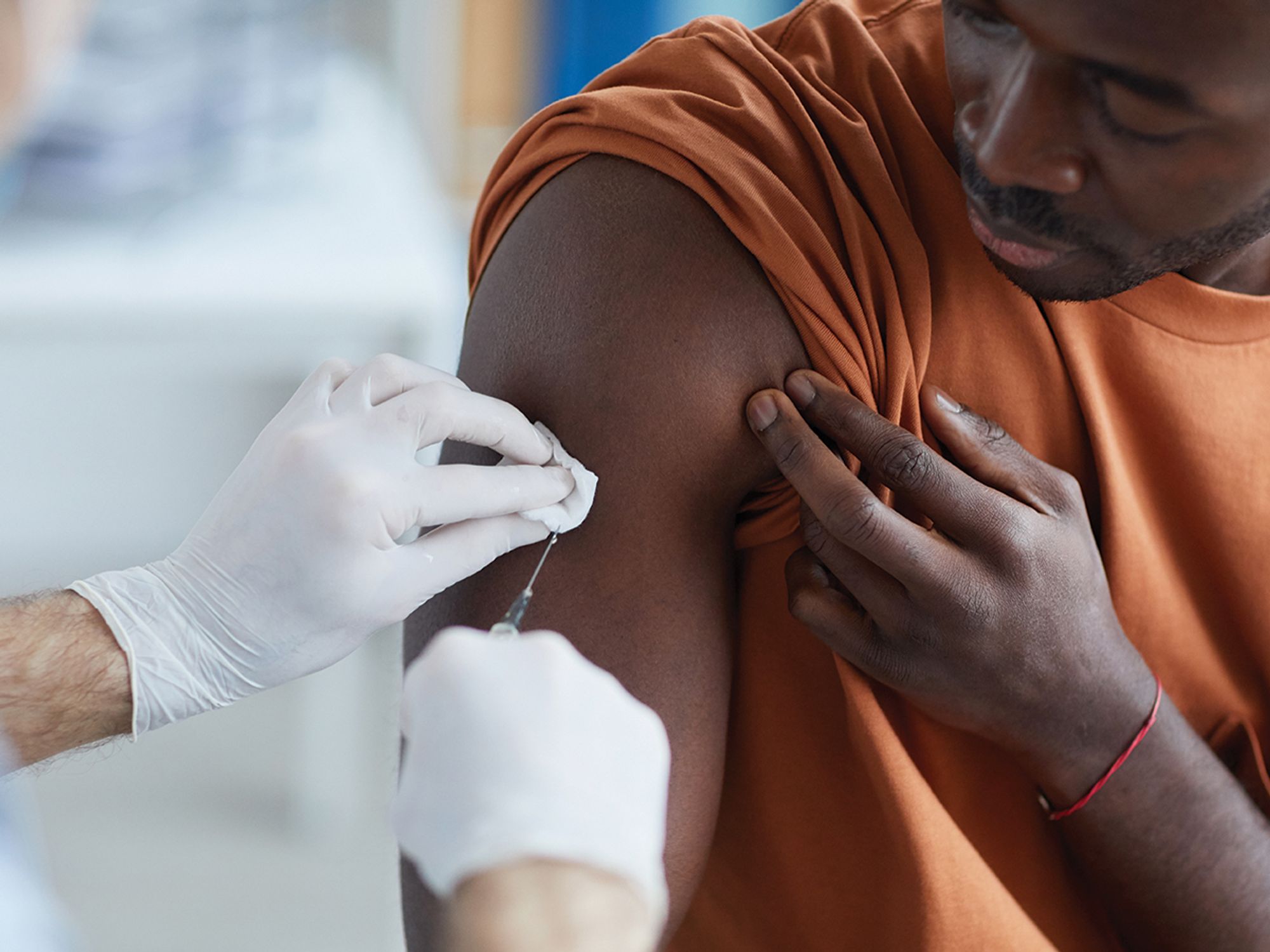Vaccination, testing, and treatment

- OSHA strongly encourages employers to provide paid time off to workers for the time it takes for them to get vaccinated and recover from any side effects.
- If an employer implements screening protocols that include COVID-19 viral testing, the ADA requires that any mandatory medical test of employees be “job-related and consistent with business necessity.”
- Most people with COVID-19 have mild illness and can recover at home.
Vaccination
OSHA emphasizes that vaccination is the most effective way to protect against severe illness or death from Coronavirus Disease 2019 (COVID-19). OSHA strongly encourages employers to provide paid time off to workers for the time it takes for them to get vaccinated and recover from any side effects. Employers should also consider working with local public health authorities to provide vaccinations for unvaccinated workers in the workplace.
OSHA suggests that employers consider adopting policies that require workers to get vaccinated or to undergo regular COVID-19 testing – in addition to mask wearing and physical distancing – if they remain unvaccinated. People are considered fully vaccinated for COVID-19 two weeks or more after they have completed their final dose of a COVID-19 vaccine authorized by the U.S. Food and Drug Administration (FDA) in the U.S. Even with the vaccine, evidence suggests that fully vaccinated people who do become infected with certain variants can be infectious and can spread the virus to others.
Additionally, employers must focus extra attention on workers who are at high-risk for serious complications from the virus. Some conditions, such as a prior transplant, as well as prolonged use of corticosteroids or other immune-weakening medications, may affect workers’ ability to have a full immune response to vaccination.
Notes:
- The federal Equal Employment Opportunity (EEO) laws do not prevent an employer from requiring all employees to be vaccinated against COVID-19, subject to the reasonable accommodation provisions of Title VII of the Civil Rights Act, the Americans with Disabilities Act (ADA), and other EEO considerations.
- Under the ADA, workers with disabilities may be legally entitled to reasonable accommodations that protect them from the risk of contracting COVID-19 if, for example, they cannot be protected through vaccination, cannot be vaccinated, or cannot use face coverings. Employers should consider taking steps to protect these at-risk workers as they would unvaccinated workers, regardless of their vaccination status.
- The Equal Employment Opportunity Commission (EEOC) enforces Title VII of the Civil Rights Act, which prohibits employment discrimination based on religion. This includes a right for job applicants and workers to request an exception, called a religious or reasonable accommodation, from an employer requirement that conflicts with their sincerely held religious beliefs, practices, or observances. If an employer shows that it cannot reasonably accommodate an employee’s religious beliefs, practices, or observances without undue hardship on its operations, the employer is not required to grant the accommodation.
Testing
Viral tests look for a current infection with Severe Acute Respiratory Syndrome Coronavirus 2 (SARS-CoV-2) virus, the virus that causes COVID-19, by testing specimens from the nose or mouth. All tests should be performed following FDA requirements. Any positive COVID-19 viral test means the virus was detected, and the person has or recently had an infection. A negative COVID-19 viral test means the test did not detect the virus, but this doesn’t rule out that the person could have an infection.
In addition, a COVID-19 viral test is a medical examination within the meaning of the ADA. Therefore, if an employer implements screening protocols that include COVID-19 viral testing, the ADA requires that any mandatory medical test of employees be “job-related and consistent with business necessity.” Employer use of a COVID-19 viral test to screen workers who are or will be in the workplace will meet the “business necessity” standard only when it is consistent with guidance from Centers for Disease Control and Prevention (CDC), FDA, and/or state/local public health authorities that is current at the time of testing.
Antibody tests, on the other hand, detect antibodies that the body makes to fight the virus that causes COVID-19. Antibody tests should never be used to diagnose a current infection with the virus that causes COVID-19. An antibody test may not show if the person has a current infection, because it can take one to three weeks after the infection for the body to make antibodies. Antibody tests can be used for public health surveillance or to test for conditions associated with COVID-19, however.
An antibody test, as a medical examination under the ADA, must be job-related and consistent with business necessity. Based on this CDC guidance, antibody testing does not meet the ADA’s “business necessity” standard for medical examinations or inquiries for employees. Therefore, requiring antibody testing before allowing workers to re-enter the workplace is not allowed under the ADA.
Treatment
Most people with COVID-19 have mild illness and can recover at home. The CDC says that a person can treat symptoms with over-the-counter medicines to help feel better. If, however, a person has COVID-19 and is more likely to get very sick from COVID-19, treatments are available that can reduce their chances of being hospitalized or dying from the disease. Medications to treat COVID-19 must be prescribed by a healthcare provider or pharmacist and started within five to seven days after symptoms appear. A healthcare provider will help decide which treatment, if any, is right for the person.
The FDA has authorized or approved several antiviral medications used to treat mild to moderate COVID-19 in people who are more likely to get very sick. Antiviral treatments target specific parts of the virus to stop it from multiplying in the body, helping to prevent severe illness and death. The National Institutes of Health (NIH) provides COVID-19 treatment guidelines for healthcare providers to help them work with their patients and determine the best treatment options for them. Several options are available for treating COVID-19. Some treatments might have side effects or interact with other medications a person is taking.
